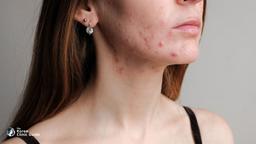Knee Whitening
Description
The knee whitening treatment generally begins with a thorough cleansing of the knee area to remove any dirt, oils, and impurities that may interfere with the procedure. A professional-grade exfoliating scrub or chemical exfoliant is then applied to remove dead skin cells and stimulate cellular turnover. This step is crucial for enhancing the penetration of subsequent treatments. In some cases, a mild dermabrasion technique may be utilized to further smooth the skin surface. After exfoliation, the knees are rinsed and dried. Following the exfoliation process, a skin-lightening agent, such as a cream containing ingredients like hydroquinone, kojic acid, or Vitamin C, is applied to the knee area. These agents work by inhibiting melanin production, helping to reduce hyperpigmentation. The treated area may then be covered with a occlusive dressing or left to absorb naturally, depending on the product's specifications and professional guidance. Some treatments may include a follow-up with a light therapy session to enhance the whitening effect and expedite results. The procedure typically concludes with the application of a moisturizing sunscreen to protect the treated skin from UV exposure, which can counteract the whitening process and potentially cause further darkening. Regular follow-up sessions and at-home maintenance regimens are usually recommended to achieve and sustain optimal results.
Ailments treated by this procedure: Knee Hyperpigmentation and Dark Knees
Search
Categories
Related Posts




Top Knee Whitening Clinics
Three Wishes Clinic - Myeongdong
Myeongdong Station
Free consultation from the clinic
Three Wishes Clinic, strategically located just a minute's walk from Myeongdong Station exit 9 in Seoul, demonstrates a sterling example of modern aesthetic medicine. Known for its high satisfaction rate, influenced by glowing reviews from patients, the clinic ensures safety, professionalism, and cutting-edge treatments in the realm of facial and body aesthetics. Here’s a concise portrayal of what the Three Wishes Clinic offers to its clientele: Petite Enhancements: Botox: Injections that temporarily reduce or eliminate facial fine lines and wrinkles. Filler: Injectable hyaluronic acid used to restore facial volume and smooth out wrinkles. Fat Dissolving Injections: Injections aimed at reducing fat deposits in targeted areas, enhancing facial or body contour. Thread Lifting: A minimally invasive procedure that uses dissolvable threads to lift and tighten sagging skin. Vaginal Rejuvenation: Vaginal Filler: Injectable treatments aimed at increasing volume and potentially enhancing sensitivity. Vaginal Tightening: Procedures that aim to tighten the vaginal canal, often for improved sexual satisfaction or urinary incontinence issues. Skin Treatments: Shurink: Likely a skin tightening and lifting treatment using ultrasound technology. Oligo: This could refer to treatments aimed at moisturizing and revitalizing the skin, though specific details are not provided. CO2 Laser: A laser treatment for skin resurfacing to improve scars, wrinkles, and overall skin texture. Laser Hair Removal: Uses laser technology to target and destroy hair follicles, resulting in permanent hair reduction. PDT Acne Treatment: Photodynamic therapy for acne, using light-sensitive compounds activated by light to reduce acne bacteria and sebum production. Facial Peel: Chemical peels to exfoliate the upper layer of skin, revealing fresher, smoother skin beneath. Rejuran Healer: A skin healing treatment that uses polynucleotides to rejuvenate the skin and improve its texture and elasticity. Skin Care Treatment: General term for various procedures aimed at improving skin health and appearance. Semi-permanent Makeup: A cosmetic technique that includes procedures like eyebrow microblading, eyeliner tattooing, and lip tinting, designed to enhance facial features with long-lasting pigments.
learn more

